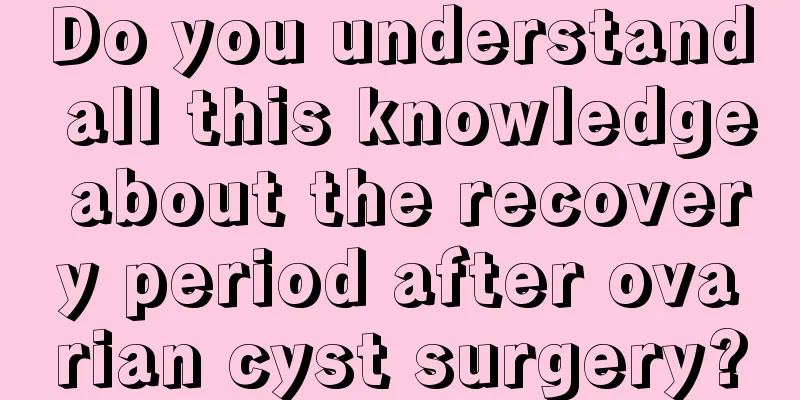What happens if there is echo in the ovaries?

|
The ovaries are the most important part of the female reproductive system and the cradle of new life. Therefore, the health of the ovaries directly determines the level of female fertility. Regularly checking the condition of the ovaries is a necessary maintenance measure for women. A common method is ultrasound examination. Some women’s ovaries have echoes during examination. Let’s take a look at what happens when women have echoes in their ovaries? 1. It is more likely to be teratoma, ovarian calcification, etc. It is recommended to go to the hospital for further examination. It is recommended that you maintain a good attitude and pay attention to review. Also pay attention to the combination of rest and nutrition. Avoid spicy, raw or cold foods. 2. The normal ovarian echo is a moderate echo slightly lower than the renal sinus echo. In a normal ovary, only the follicles have no echo. Both increased and decreased ovarian echogenicity indicate ovarian lesions. If the ovaries are cystic and echo-free, be alert to the possibility of polycystic ovaries. 3. Although ovarian cysts are prone to malignant transformation, they can be avoided through early examination, early detection and early treatment. For young infertile women with small tumors, whether bilateral or unilateral, ovarian tumor eradication should be performed as much as possible. For patients with larger tumors, part of the ovarian cortex should be preserved as much as possible to preserve the patient's reproductive function. For prevention, conduct annual surveys and treatments to strengthen health care. If the patient is shown as having no echo on the examination sheet after the examination. This indicates that the current patient's ovarian cyst is not a simple cyst, that is, the composition of the ovarian cyst is liquid. If the ovarian cyst has echo after examination, it means that the current ovarian cyst is not simple, but it does not mean that it is malignant. As a gynecological disease, ovarian cysts are benign tumors, but some ovarian cysts without growths may disappear on their own with menstruation. Moreover, because it is a benign disease, ovarian cysts do not require treatment if they are small in size. Surgical removal is only recommended when they grow larger than 5 cm. The only thing that can be confirmed when an ovarian cyst has echo is that the current ovarian cyst does not exist. Whether treatment is needed and how to receive treatment needs to be determined based on other characteristics of the disease, such as volume and other examination results, and the doctor's advice. |
<<: What causes premature ovarian failure in women? Beware of these triggers!
>>: What are the symptoms of low-grade cervical squamous intraepithelial lesion?
Recommend
How to treat uterine cold?
With the emergence of the problem of uterine cold...
Which is earlier, the Analects or the Zuo Zhuan? What are the basic characteristics of the Analects style?
The content of "The Analects" involves ...
A guide to eye protection during the Mid-Autumn Festival and National Day holidays, when traveling or staying at home!
The extended mini holiday is coming! You who are ...
The fetal heart rate in late pregnancy is down, and it is a boy
I believe that many expectant mothers are very co...
The best time to remedy the problem of milk insufficiency
For mothers, they will try their best to breastfe...
What are the benefits of eating loquats? How to store loquats for a longer time
Loquat is rich in various nutrients, so it can ef...
What are the traditional Chinese medicine prescriptions for candidal vaginitis?
For many diseases, people prefer to choose Chines...
What are the phenomena of breast hyperplasia?
Breast hyperplasia is one of the most common dise...
Can I drink safflower during menstruation?
During menstruation, women need to pay attention ...
Best dietary therapy for anemia in pregnant women
I believe everyone must know the benefits of diet...
What does a retroverted uterus mean?
Retroverted uterus is not uncommon among women. G...
What are the dangers of smoking for girls? It may cause premature aging!
Smoking is not gender-specific, and now more and ...
Can I take anti-inflammatory drugs during menstruation for adnexitis?
Adnexitis is a relatively common female disease i...
What to do if there is a bad smell in the vagina
What should you do if there is an odor in the vag...
What is the origin of Wenchang Chicken? Introduction to Wenchang Chicken
Wenchang Chicken is the most famous traditional d...









